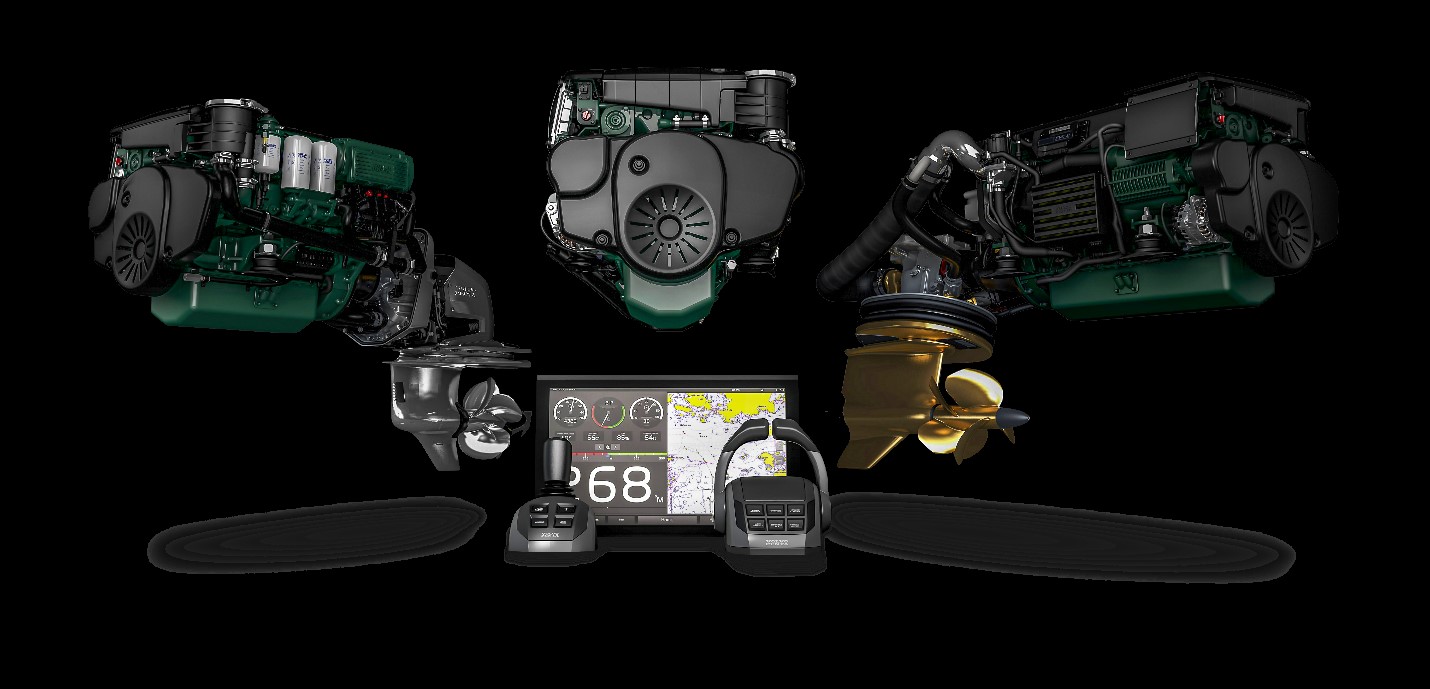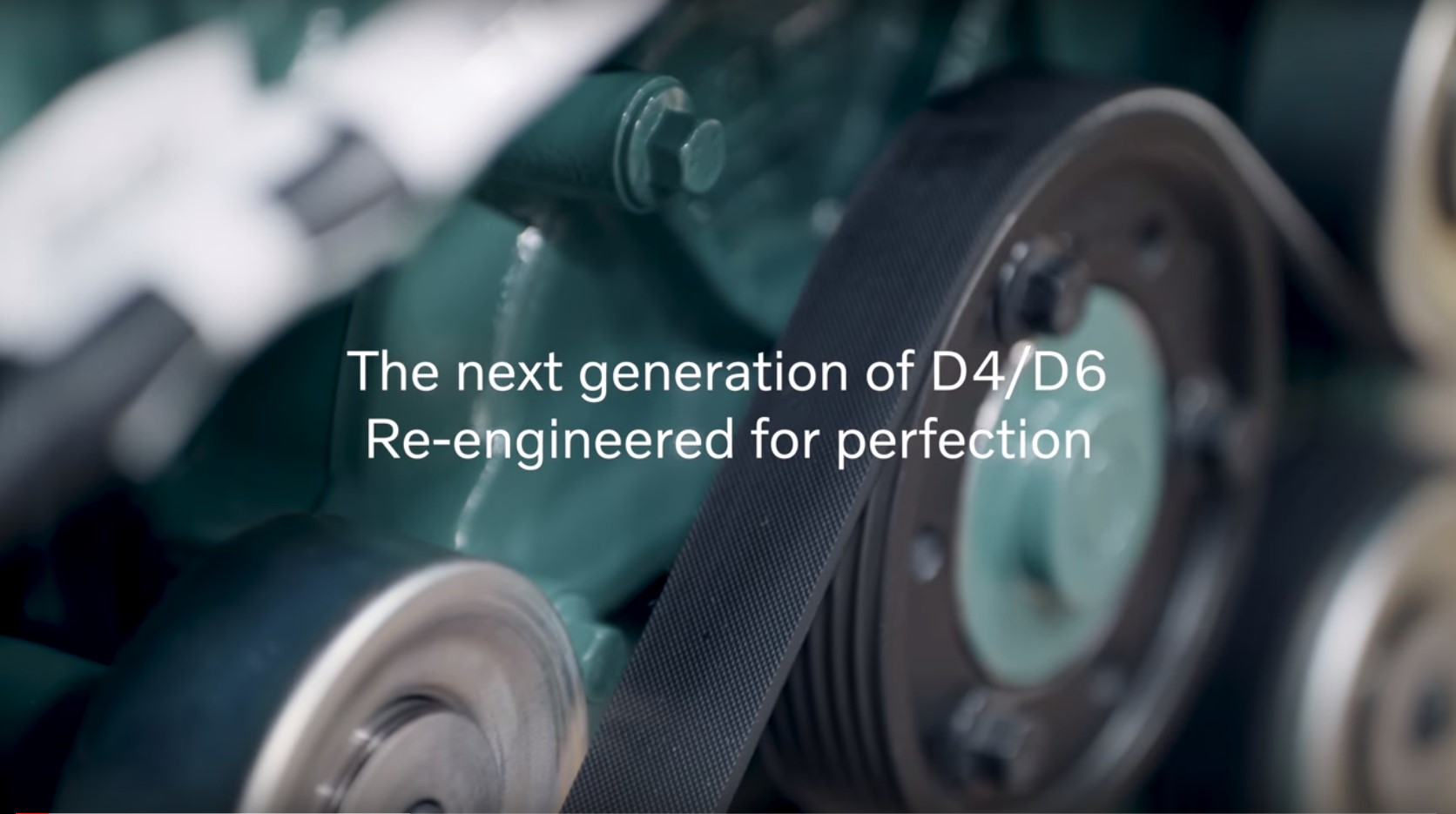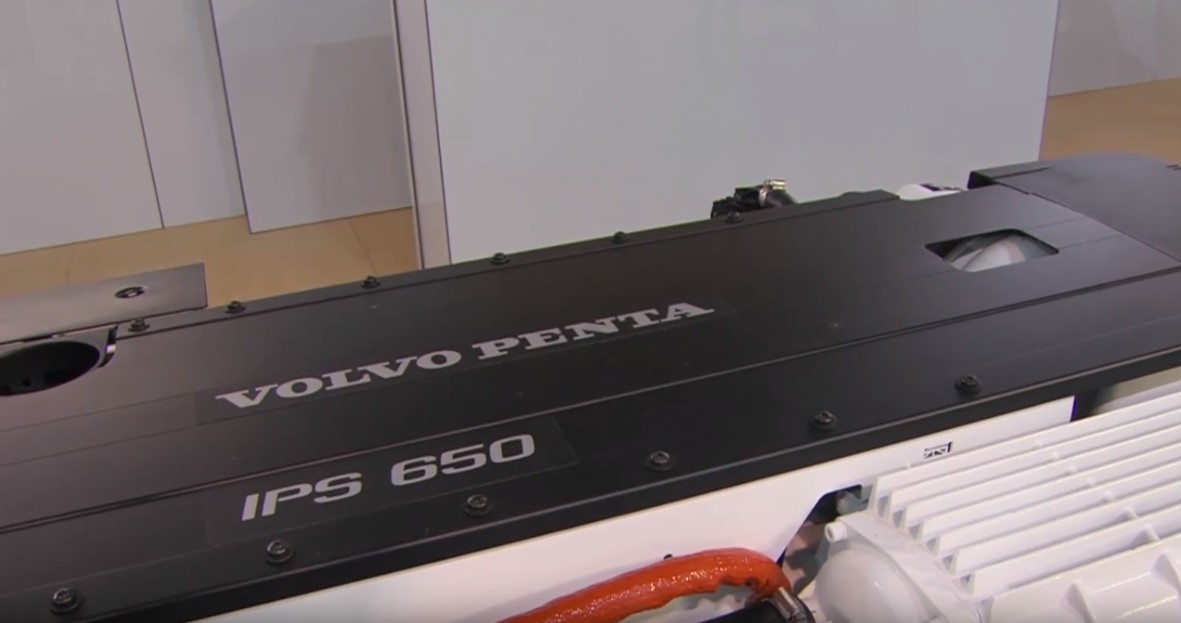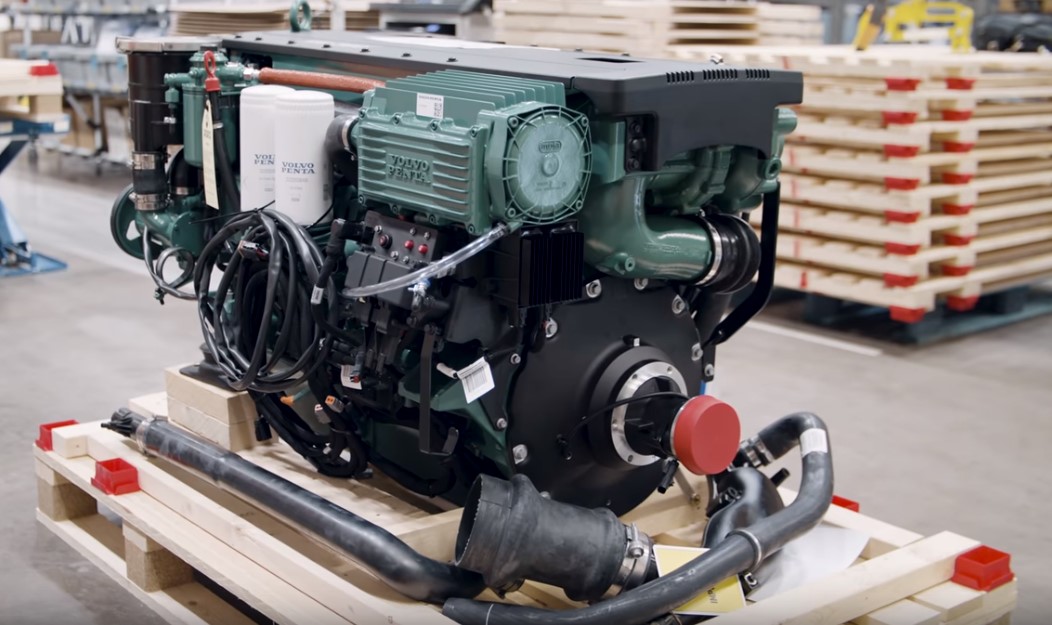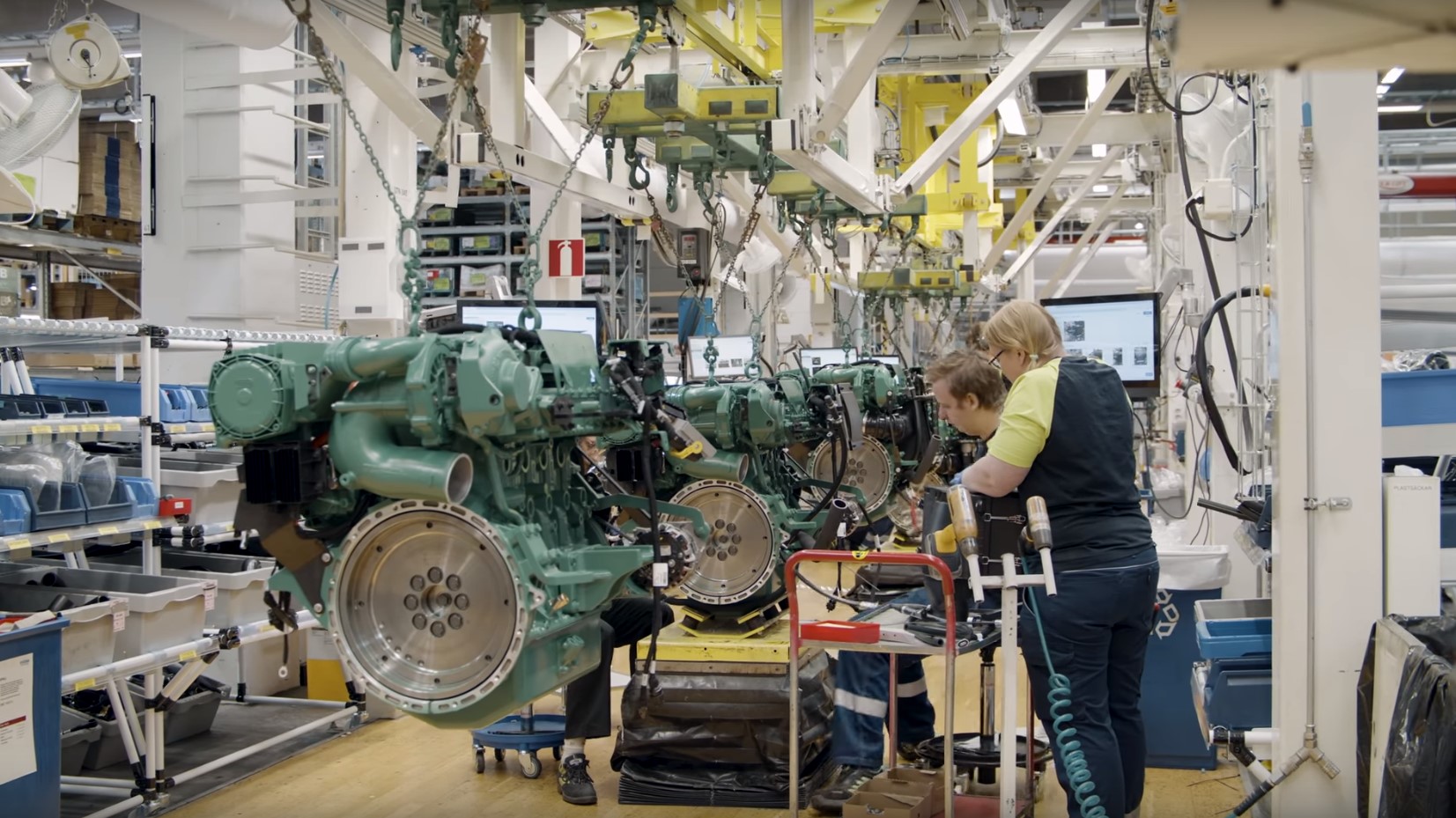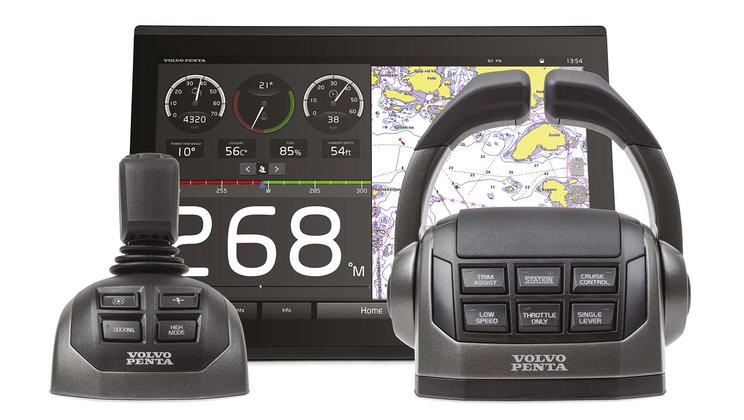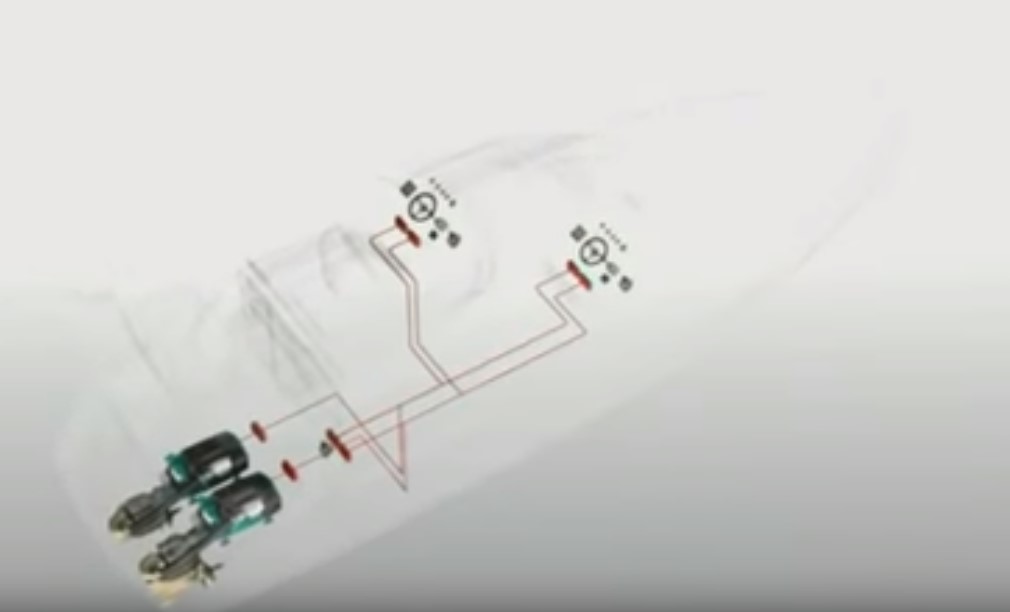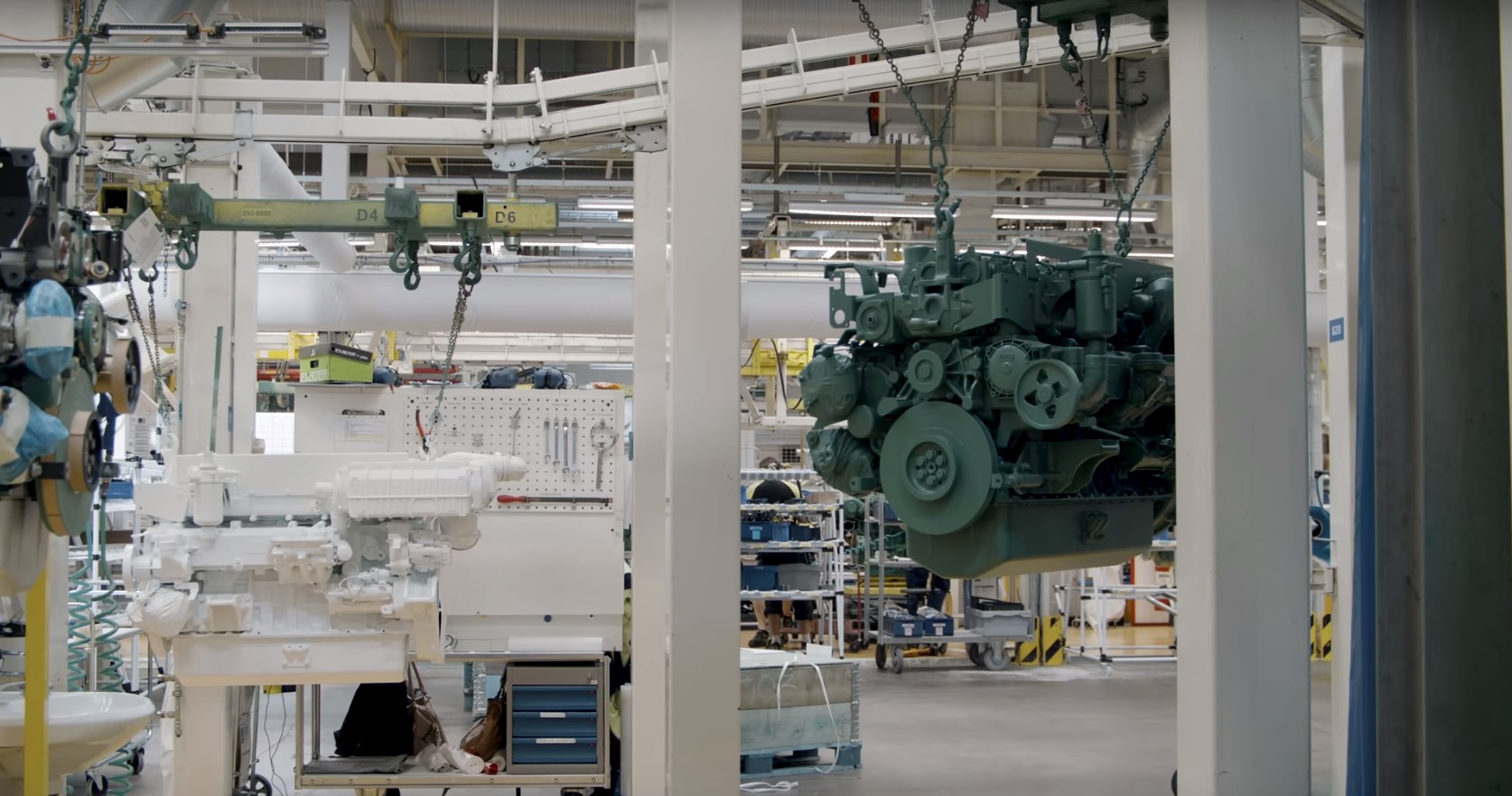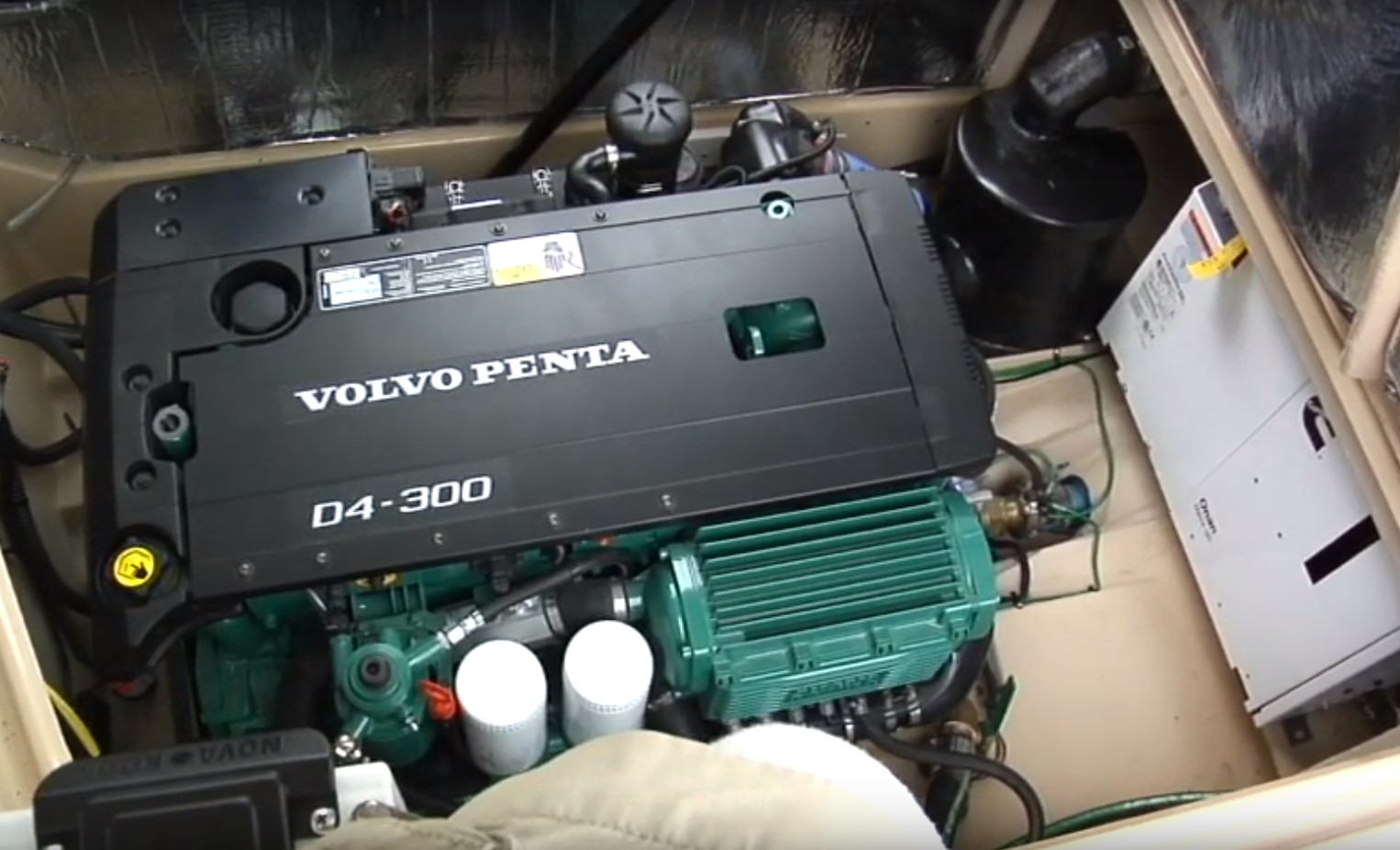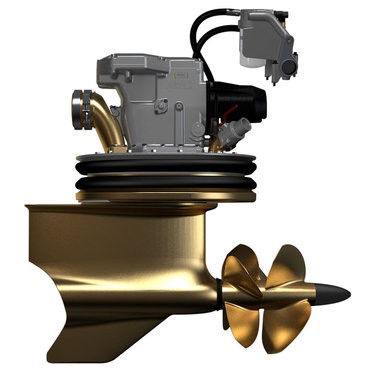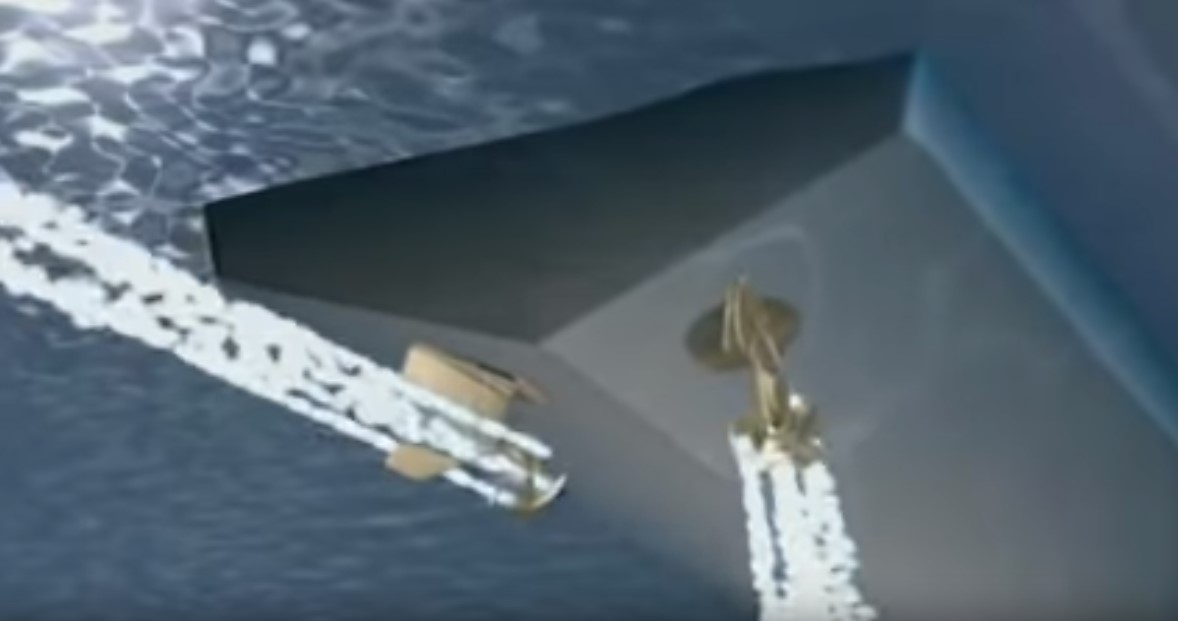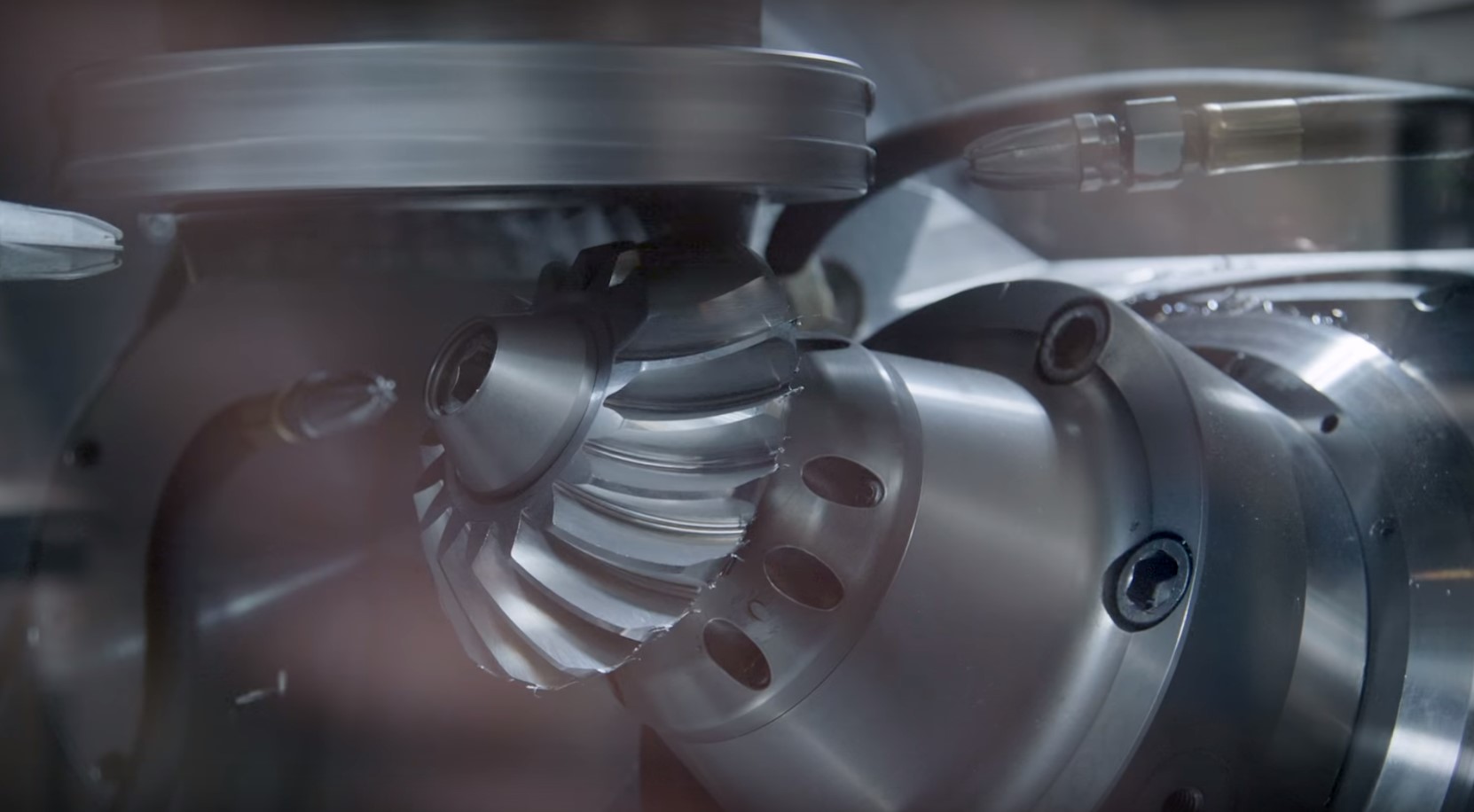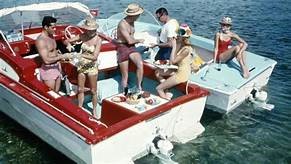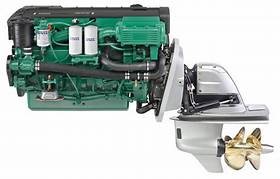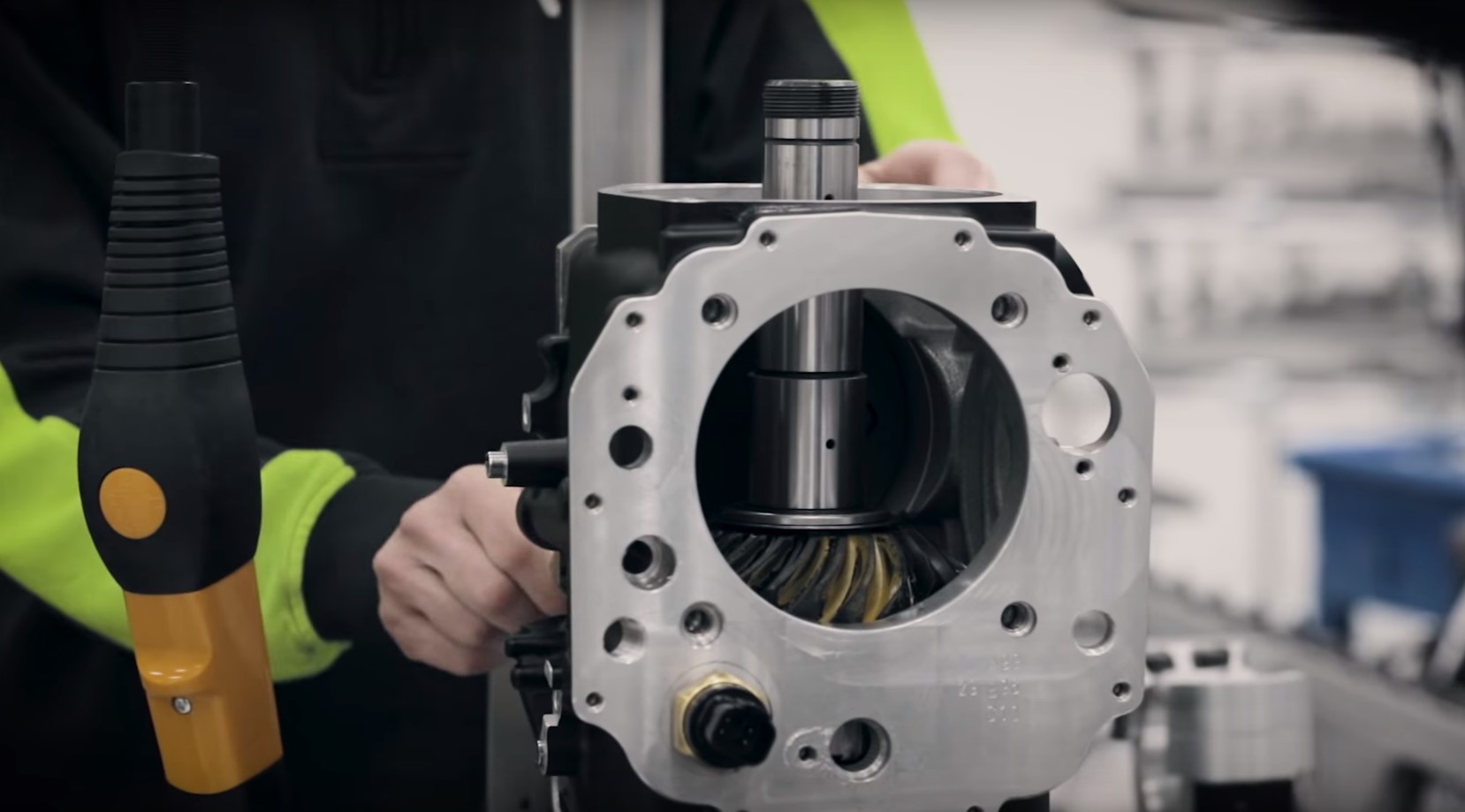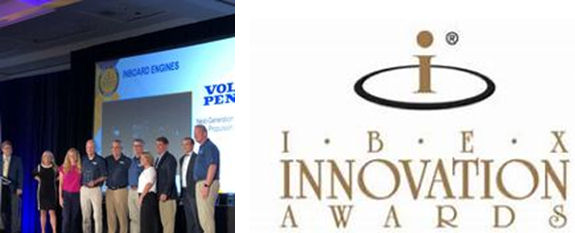Brief Summary
If you desire more information about the Volvo Penta Next-Generation D4 and D6 Marine Propulsion Systems, click here...
In a sweeping review, Volvo Penta has upgraded many aspects of the company’s popular D4 and D6 diesel engine packages, from 150 to 480-hp. The upgrades include helm-to prop changes beyond the engines themselves - although those received major changes, too.
Volvo Penta redesigned the Electronic Vessel Control (EVC) system that controls functionality. Then the engines were beefed up to deliver more power, improved fuel efficiency, and increased reliability, resulting in lower cost of ownership. Finally, Volvo Penta updated their IPS drive and rolled out an all-new Aquamatic sterndrive.
Key Features
Specifications
| Type of Engine | |
|---|---|
| Number of Cylinders | 6 |
| Horse Power | 150-480 |
| Configuration | |
| Weight | |
| Fuel Type | Diesel |
| Fuel Delivery | |
| Shaft Length Options | |
| Shift Throttle Control | |
| Displacement | |
| Steering Control | |
| Recommended Fuel | |
| Alternator Output | |
| CARB Rating | |
| Engine Monitoring System |
Captain's Report
If you desire more information about the Volvo Penta Next-Generation D4 and D6 Marine Propulsion Systems, click here...
Editor’s Report by Capt. Peter d’Anjou
The result is a better overall propulsion system with many benefits to owners that industry experts have acknowledged, praised, and awarded. We’ll look at the changes to each major component – electronic controls, engines, and drive units – and explain what it means for boaters and builders alike who own, service, or install Volvo Penta diesels.
What Prompted the Changes?
While Volvo Penta enjoys an enviable reputation for innovation and dependability, it has been almost 20 years since these engines made their debut in 2003.
With over 100,000 D4 and D6 marine diesels already powering boats worldwide, Volvo Penta solicited additional customer feedback to make critical assessments. They also adopted a market view which helped drive change. Volvo Penta refers to this as their “easy boating” philosophy – making the boating experience easier and more accessible.
Mission
Driven philosophically to improve their products for their customers and with years of data on what needed attention, the final piece of how to position for future expansion crystallized in a holistic approach: the electronic control system, the engines, and the transmissions or drive units were looked at as a total propulsion system, with expandability to add features in the future. The “easy boating” philosophy drove the entire project:
- More reliable, longer lasting, and efficient
- Easier to order, install, maintain, and upgrade
- Better performance
- Reduced overall cost of ownership
And with the resources of Volvo Penta’s expansive technology capabilities as part of the Volvo Group, the project consumed some 300,000 engineering man hours and 40,000 hours of testing before the new propulsion systems hit the market.
Electronic Vessel Control
Volvo Penta knew they had to re-design the Electronic Vessel Control (EVC) System with the complete boat in mind. The EVC system is the electrical platform that connects and manages the internal communications between the engine and driveline, levers, and display screen – giving vessel owners integrated functionality and simpler operation.
With an all-new electrical architecture, the rewritten EVC 2 operating system required new or enhanced features:
- On-board Maintenance Assistance
- Improved diagnostics and traceability
- Steer-by-Wire, single electronic connection to helm
- Faster software downloads
- Joystick and control lever updates
- Integration with dynamic positioning system (DPS)
The new EVC system is now more independent of the driveline and offers future expansion of features. This allows a modular order, delivery, and installation of the engine, transmission drive unit, and all of the EVC features.
Key EVC features with new benefits for customers include:
The On-board Maintenance Assistant, which informs users of service dates as well as keeps track of past servicing and diagnostic information with a real-time clock.
The new Steer-by-Wire feature is now standard on both single and twin installations of the new Aquamatic DPI sterndrive. This eliminates the need for hydraulic fluid at the helm and makes EVC features, such as Low speed and DPS (Dynamic Positioning System) available to both the new sterndrive but also to a range of future applications.
The EVC 2 platform now has only a single connection point, regardless of how many engines are in the installation. This offers greater ease of maintenance as well as enhanced software downloads and diagnostics.
In the future, EVC 2 will act as the primary enabler, providing remote diagnostics and connectivity. It forms the foundation for connecting all future features in a boat and allows new services to be uploaded anywhere in the world, as they become available.
Engines
The list of engine upgrades includes a new engine management system, new fuel injection system, new turbocharger, and a new supercharger. The cylinder head, pistons, and valves have been re-engineered to withstand higher torque, making them more reliable and durable.
According to Volvo Penta, the reengineered D4 and D6 engines deliver better performance with up to 10% more power across the range, and they are more fuel efficient – between 1% -to 7%.
Volvo Penta tells us that new materials have been introduced, such as a Diamond-Like Carbon (DLC) coating on the piston pin to reduce friction and increase durability. The common rail fuel injection system now features higher pressure – 2,000 bar. Controlled by the new Engine Management System, this enables more precise calibration of parameters affecting fuel management, so the engines run smoother and more efficiently.
The new gen D4/D6 engines offer reduced maintenance costs, due to extended service intervals, fewer service items, and simpler maintenance operations. The new EVC system’s onboard service assistant tracks maintenance information and indicates time left to next service.
Each propulsion system comes as one complete package to ease installation. The installation dimensions are largely the same as the previous generation.
Transmission Systems
The IPS system’s forward-facing, twin counter-rotating propellers and individual steerable pods was a groundbreaking design when it first appeared in 2005. According to Volvo Penta, its propulsion system produced 30 percent lower fuel consumption at mid-range compared to conventional inboard shaft installations. This claim was confirmed by BoatTEST in the two subsequent years as we tested several boats with boat straight shafts and the new IPS drives.
Noise and vibration levels were also reduced, according to Volvo. An IPS package could also be installed in twin, triple or quadruple configurations easily by builders. Indeed, the speed and ease of installation became a major attraction to builders who were able to cut many man-hours out of construction.
Not surprisingly with a new system so complex, in the beginning, there were a few bugs in some of the systems installed, but over time these issues were ironed out.
Wealth of knowledge and feedback from having over 25,000 IPS drives in use has led Volvo Penta to update the IPS for serviceability and reliability.
Easier servicing is possible because filters and oil can be accessed easily from inside the hull and the oil only needs changing every other year. A new oil exchange concept is a major time saver, and the boat can stay in the water during the operation. Sensors now read the differential oil pressure on either side of the filters in order to identify clogged filters. Also a water-in-oil sensor has been added to detect any ingress of water, preventing damage to the transmission.
Greater reliability has also been a key focus of the update. Gear material has been upgraded with high-strength steel. The propeller shaft seal, input bearing carrier, and upper shaft and bearings have also all been redesigned to improve durability. And overall cleanliness has been improved in the manufacturing process by investing in a completely new clean room assembly line – resulting in prolonged life and reliability for all parts.
All these enhancements result in a lower cost of ownership.
The Aquamatic Sterndrive DPI
The redesigned Aquamatic’s enhanced performance is attributable to the new hydraulic clutch which allows silent and smooth shifting – the “clunk” is gone! The new clutch also enables slipping at low engine speeds, resulting in greater maneuverability and higher comfort at low boat speeds. The hydraulic clutch, together with electric steering – is now standard for DPI and provides improved joystick docking functionality. It also enables a Dynamic Positioning System capability to be introduced, which automatically maintains a boat’s heading and position, even during strong currents or windy conditions – ideal when preparing for docking.
This redesign, once again, offers longer service intervals, fewer service items and introduces seals that have been designed for longer life. Oil and filter change intervals are extended from every year to every two years, making maintenance easier.
Greater reliability has also been a key part of the update, with a focus on redesigning and reinforcing components. Additional sensors have been introduced for improved diagnostics and monitoring of system health, further aiding reliability. And just like the IPS system, overall cleanliness has been improved during manufacturing to ensure extended life and reliability for all parts.
Observations
Volvo Penta has significantly improved almost every aspect of its flagship D4/D6 product line and market-leading IPS and DPI driveline systems. These upgrades focus on the things that really matter to boat owners, namely, longer service life with less maintenance, reduced cost of ownership, and improved reliability, durability, and performance.
If you desire more information about the Volvo Penta Next-Generation D4 and D6 Marine Propulsion Systems, click here...
